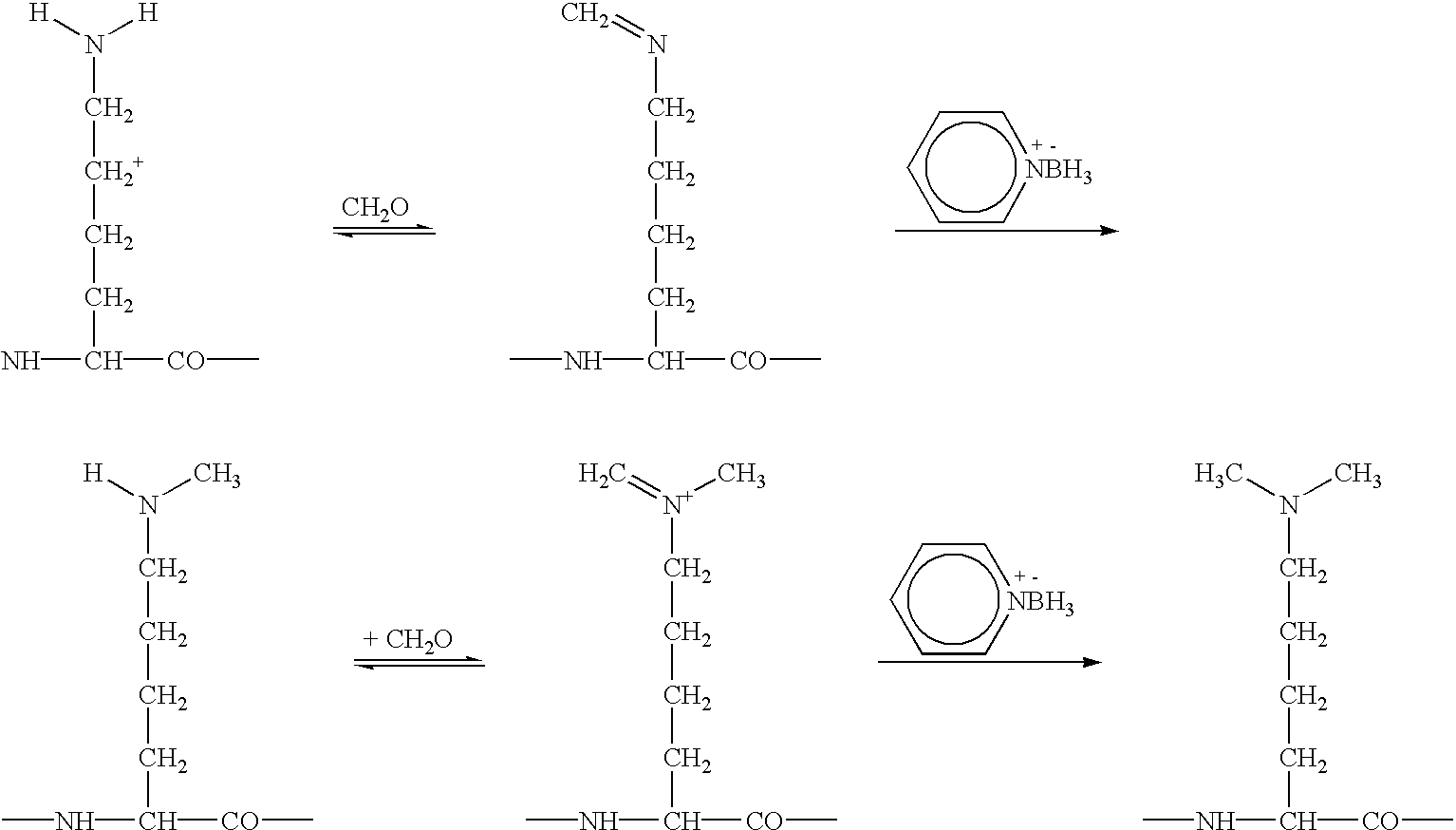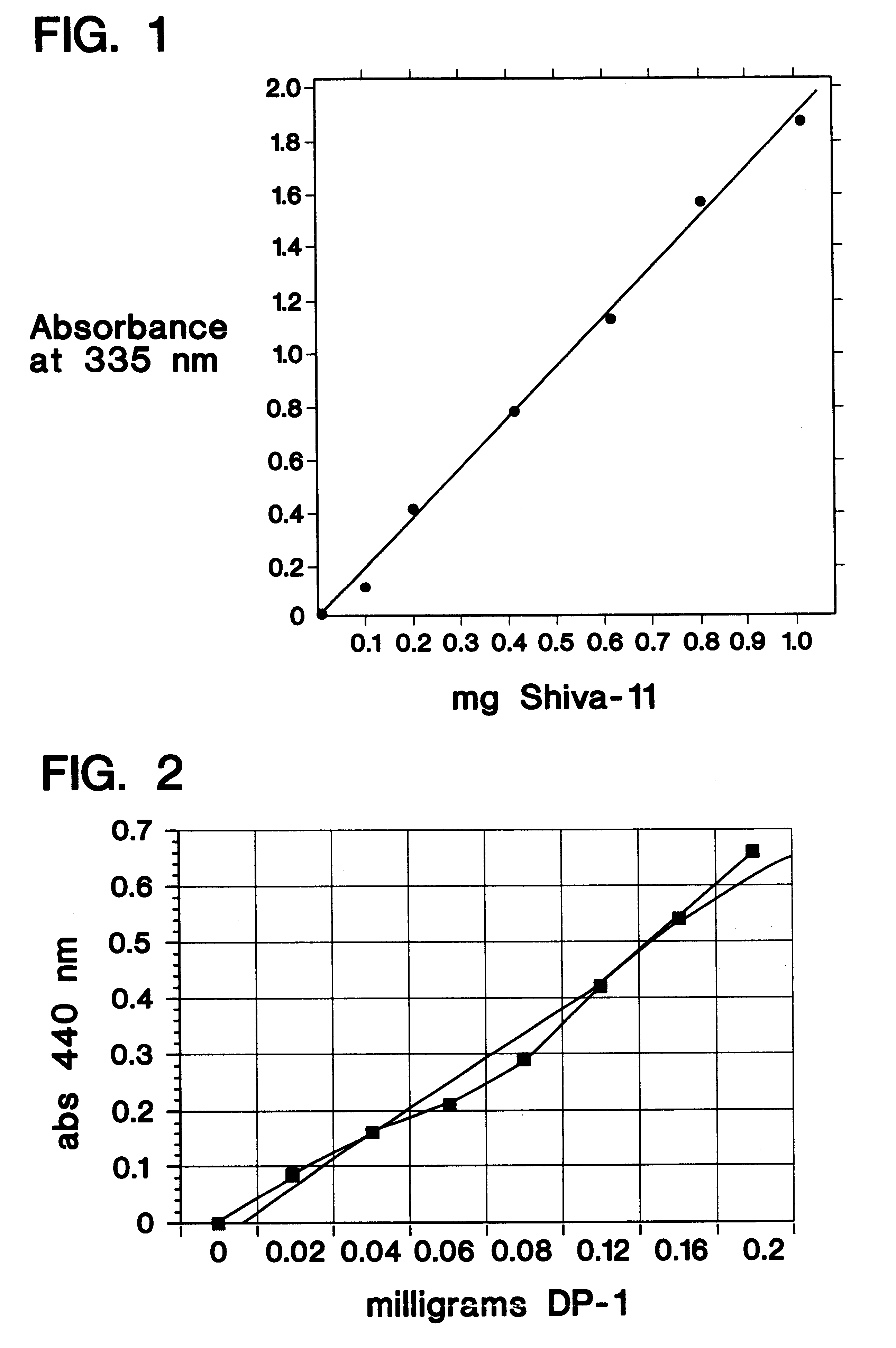Non-naturally occurring synthetic lytic peptides
a synthetic peptide, non-naturally occurring technology, applied in the direction of peptides, peptide sources, peptide/protein ingredients, etc., can solve the problems of synthetic peptides being susceptible to tryptic digestion, limited action of lytic peptides on normal mammalian cells, and limited use of lytic peptide analogs in vivo
- Summary
- Abstract
- Description
- Claims
- Application Information
AI Technical Summary
Benefits of technology
Problems solved by technology
Method used
Image
Examples
example 1
Representative Lytic Peptides
Set out in Table 1 below as illustrative examples of lytic peptide analogs of the present invention are the amino acid sequences of a family of related peptide analogs. The peptides may be synthesized according to conventional methods using a Milligen.TM. solid phase peptide synthesizer. Representative peptides from this group are methylated, and used in subsequent experimental examples. The three letter amino acid symbols are as follows: Ala, alanine; Cys, cysteine; Lys, lysine; Phe, phenylalanine; Ser, serine; and Val, valine. These lytic peptide analogs are designated for ease of reference as SEQ ID NO. 1-6 and 14-43.
Table 1: Peptide Sequences
SEQ ID NO. 1: Phe Ala Val Ala Val Lys Ala Val Lys Lys Ala Val Lys Lys Val Lys Lys Ala Val Lys Lys Ala Val Lys Lys Lys Lys
SEQ ID NO. 2: Phe Ala Val Ala Val Lys Ala Val Ala Val Lys Ala Val Lys Lys Ala Val Lys Lys Val Lys Lys Ala Val Lys Lys Ala Val Lys Lys Lys Lys
SEQ ID NO. 3: Phe Ala Val Ala Val Lys Ala Val Ala Va...
example 2
Chemical Modification by Methylation
An exemplary and preferred reaction scheme for reductive alkylation of lysine residue .epsilon.-amino group and the N-terminal .alpha.-amino group is described below.
The preferred method for reductive alkylation uses pyridine borane as the reducing agent. This reagent is one of a class of reducing agents known as amine boranes. Pyridine borane exhibits a slightly higher reducing capacity than sodium cyanoborohydride, another reducing agent that can be used for the reductive alkylation. Pyridine borane drives the reductive alkylation reaction to complete dimethylation with no monomethyl products when excess reagents are used, as demonstrated by Wong, W. S. D., et al. Analytical Biochemistry 139: 58 (1984). While as much as 25% of cyanoborohydride goes to N-cyanomethyl products, lowering its methylation yield, pyridine borane does not appear to be involved in any such secondary reaction. In addition, sodium cyanoborohydride provides the potential ha...
example 3
Determination of Lysyl Dimethylation
The method selected to monitor the level of reductive alkylation is a procedure which provides a spectrophotometric assay of the unsubstituted amino groups (Habeeb, A. F. S. A., Anal. Biochem., 14: 328 [1966]). This procedure uses 2,4,6-trinitrobenzenesulfonic acid (TNBS, picrylsulfonic acid) which reacts with primary amines to form trinitrophenyl (TNP) derivatives, producing a visible yellow color and a UV absorbance maximum at 335 nm. The extent of amino group substitution can therefore be quantified. The procedure is described as follows: Added to the assay tubes is 1.0 ml of 4% NaHCO.sub.3, pH 8.5. With mixing, 1.0 ml of peptide standards and unknowns at a concentration of 0.06 to 1.0 mg / ml peptide are added to separate tubes and then 1.0 ml of 0.1% TNBS is added to each tube. The solutions are incubated at 40.degree. C. for 45-60 minutes. After the incubation period, 0.5 ml of 1N HCL is added to the tubes. If necessary, 1 ml of 10% sodium dod...
PUM
| Property | Measurement | Unit |
|---|---|---|
| molecular weights | aaaaa | aaaaa |
| pH | aaaaa | aaaaa |
| volume | aaaaa | aaaaa |
Abstract
Description
Claims
Application Information
 Login to View More
Login to View More - R&D
- Intellectual Property
- Life Sciences
- Materials
- Tech Scout
- Unparalleled Data Quality
- Higher Quality Content
- 60% Fewer Hallucinations
Browse by: Latest US Patents, China's latest patents, Technical Efficacy Thesaurus, Application Domain, Technology Topic, Popular Technical Reports.
© 2025 PatSnap. All rights reserved.Legal|Privacy policy|Modern Slavery Act Transparency Statement|Sitemap|About US| Contact US: help@patsnap.com



